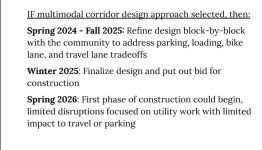Aprehensive_Words
Active Member
- Joined
- Oct 18, 2022
- Messages
- 278
- Reaction score
- 539
I do suspect the ability to sidestep any lengthy public engagement process about a permanent change is what's driving a lot of these "pilot" decisions. Not everyone is as brave as Jay Monti in Everett (Mr. "The Pilot Is the Process" regarding the Broadway bus lanes) but the sentiment is there. Run the pilot and gather data along the way so at some point, you can issue a report validating the decision and change the bureaucratic designation from "pilot" to "permanent" the next time the road needs resurfacing.
I've wondered if this has (negative) implications for enforcement, though. The Washington Ave. bus lanes in the North End seem like a prime example. Any time it's a heavy traffic day or a rain storm, drivers all seem to think the red paint doesn't apply to them anymore -- possibly because the right-turn lane onto Atlantic Ave. might be backing up. By not making them a big production (and center-running a la Columbus Ave, as they should be on North Washington IMO), is it harder to get BTD and BPD to take enforcement seriously?
I've wondered if this has (negative) implications for enforcement, though. The Washington Ave. bus lanes in the North End seem like a prime example. Any time it's a heavy traffic day or a rain storm, drivers all seem to think the red paint doesn't apply to them anymore -- possibly because the right-turn lane onto Atlantic Ave. might be backing up. By not making them a big production (and center-running a la Columbus Ave, as they should be on North Washington IMO), is it harder to get BTD and BPD to take enforcement seriously?
Last edited:



